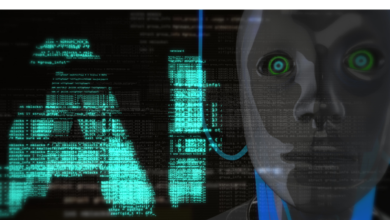The Best Cyberthreats and Cybersecurity Tips

An average internet user will spend hours of their day browsing through various websites, working or studying from home, using social media, shopping, and whatnot. Since exposure to online media is expanding with each passing day, so are the risks associated with it.
The first and easiest thing to do about it is to sign up with an Internet Service Provider (ISP) that takes your security seriously. Providers like Spectrum Internet® provide routers with internet connections that have built-in firewalls and all come with free Internet Security to keep you protected from any malware or viruses while surfing.
However, you must understand what pitfalls you may come across so that you can avoid them altogether. As they say, “Prevention is better than cure.”
Cybersecurity
As the name suggests, it is just a practice of protecting your information, thus yourself, online when you go about your virtual activities. In this digital era, we are more prone to cybercrimes because almost everything is done online. It could be shopping for groceries, an airline ticket, paying bills, or a hotel booking, there is nothing we can’t do online with a credit card.
All this online activity creates data that is stored on the cloud (an online data server). Cloud storage is accessible on all your devices, but you’re not the only one who can access it. With access points like public Wi-Fi used by millions, hackers are having the time of their lives creating viruses and malware and stealing financial data from unsuspecting users. They evolve and innovate new ways to attack by the day.
Threats
As I said earlier, hackers keep innovating new ways to conduct their crimes, but there are a few threats that have been on the rise in the past few years and it is worth keeping them in mind when working on your cybersecurity regime.
Malware
If you’ve ever encountered malware, you probably know it sucks. If you haven’t, I pray you never have to. These are malicious software that causes extensive damage to your data once they gain access. A recent and widely known example of such software is Ransomware. This is a kind of malware that scrambles all your data and locks you out of your system as a result. It then tries to extort money from you in return for unlocking the system. However, regaining access to the system has rarely been reported.
Human error
Primarily you and anyone else using your internet network are the biggest threat to the network’s security. Lack of awareness about cybersecurity and human error can become a deadly combo against your valuable data protection. It could be in the form of very easy passwords or falling prey to social engineering tactics, in any circumstance you’ll end up losing more than just data.
Formjacking
As it may be evident by the name, jacking is when a hacker takes over an eCommerce website’s checkout forms using malicious code to steal the financial information of shoppers. For example, you buy a pair of beautiful shoes from a website using your credit card and never use it again for the month. However, when you receive the bank statement there have been several transactions on various items that you have no idea about. This is what could happen if the website you shop from had been formed jacked.
Social Engineering and Phishing
Phishing is an attempt to access your network and accounts and gain personal information that can be used against you to trick you into performing actions like money transfers, etc. These attempts are usually conducted through domain and phone number spoofing so that the victim has less reason to doubt. Giants like Facebook and Google have even fallen victim to such attacks in the past, so it leaves very little reason for us to believe that we can be safe without any protection in place.
Man in the Middle (MITM)
Mobile banking apps are a popular target for such attacks. This usually happens through Wi-Fi spoofing, where a hacker secretly relays the communication between you and other parties quietly gathering whatever information he or she requires, be it financial or otherwise. All the while, you won’t even know that you’re not directly communicating with the other party.
Outdated Software and Hardware
Using outdated technology in this day and age is like going for a duel with a sword when your opponent has an AK-47. You must keep your hardware as well as software up to date to have a secure network. Manufacturers of all security software, operating systems, tools, and applications keep releasing updated patches to ensure that any loopholes are covered to keep you safe. Your inefficiency to install such updates and patches is a hacker’s dream.
Summing up
Even though all this sounds scary and can be overwhelming, it is very much possible to keep a check on any malicious activity on your network. Awareness is key to a secure network, be it your home or business. You constantly need to keep yourself updated on emerging trends in cybercrimes. Strong firewalls, anti-virus, and anti-malware act as your infantry in the war against cyber-attacks. Set up the spam filter for your emails, use two-factor authentication wherever possible, and keep your software as well as hardware updated. Encryption is your best friend, so consider using a VPN.
Lastly, stay away from unknown or dodgy websites; do not click any links sent from email addresses you do not recognize, and even then be very cautious before downloading anything. Tricky phone calls asking for personal or financial information immediately are never authentic so beware. Stay safe!








![Momix APK Download v.8.1 March 2023 [FIXED] Free!](https://apkfuel.com/journal/wp-content/uploads/2023/03/Arabs-hackers-vip-5-390x220.png)